The Hollywood barn where 3 million soldiers did the jitterbug
The real one, on Cahuenga. Not the the one on Seward trying to steal its valor.
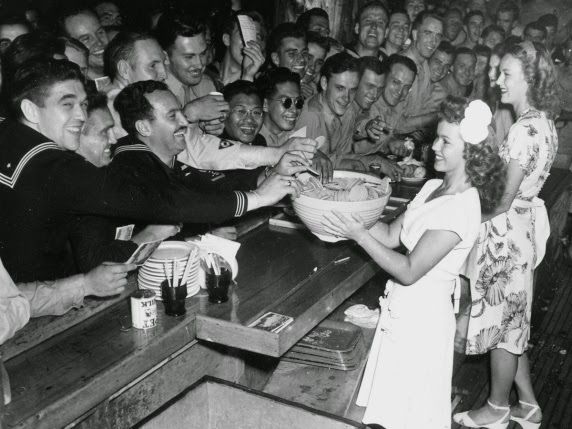
For three years, the hottest club in Hollywood was one that did not serve alcohol. And it had way more men patrons than women. But it did have Rita Hayworth serving sandwiches and Marlene Dietrich dancing with anyone who asked.
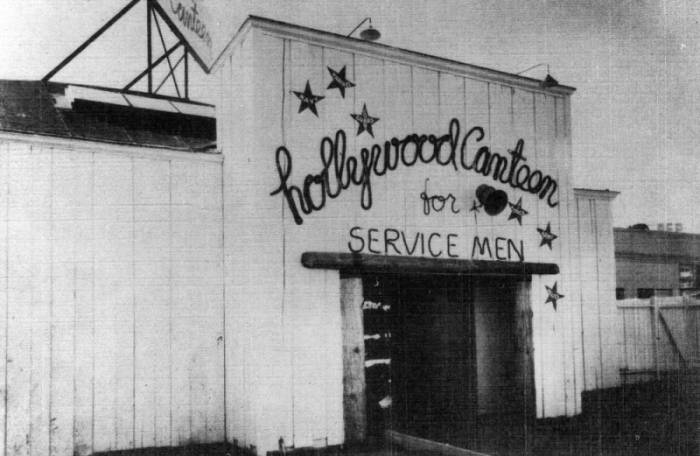
The Hollywood Canteen opened in 1942 after movie star John Garfield visited the Stage Door Canteen in New York City and asked the far more powerful actor Bette Davis for help in opening a Los Angeles equivalent. The idea was simple: a place for servicemen on leave or shipping out to have a wild, but G-rated, night, on the house.
A promotional video for Hollywood Canteen, followed by a very weird installment of the instructional Private Snafu cartoon series. Courtesy Periscope Film.
While the Stage Door Canteen opened satellite locations around the country and in Europe, the standalone Hollywood Canteen was far more celebrated: movie stars are much more famous than Broadway stars. And all of the flash was due to the presence of the celebrities who came every night to volunteer their time, whether on the stage or the dance floor or in the kitchen or behind the bar that only served fruit punch. (Getting caught with alcohol meant an immediate 86. The wholesome image was incredibly important to the organizers. Starlets were under orders not to give out their contact information to the soldiers.)
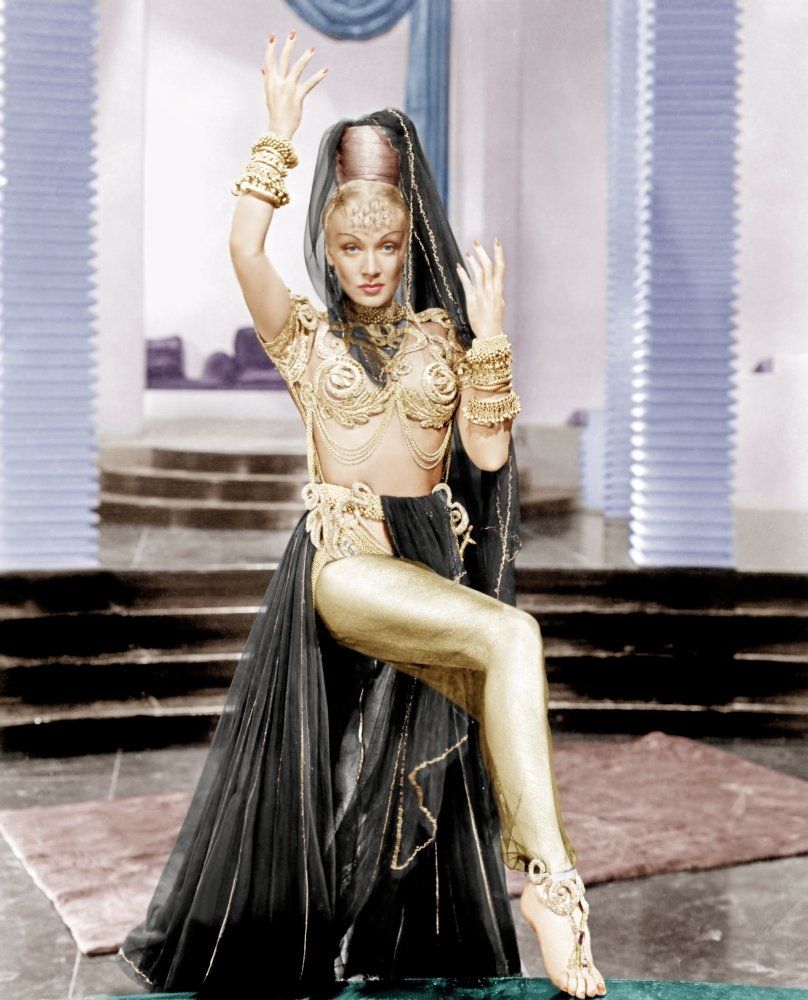
In articles about the Canteen, written while it existed or after, the food is never mentioned, except in terms of how much was served. I believe it offered, in addition to the non-alcoholic punch, hot dogs, sandwiches, fruit, chips, doughnuts, cake, milk, coffee, and cigarettes. The first image in this article shows Shirley Temple with a bowl of cookies or crackers. There are also photos of turkeys during the holidays.
Hollywood Canteen was initially funded by ticket sales for "Talk of the Town," a Cary Grant movie, and a fundraiser night at Ciro's, a more conventional nightclub. The Canteen committee found an old unused stable in Hollywood for the location, spruced it up through the volunteer work of guild members, and rented it for $100/month. Opening night raised thousands of dollars by selling tickets for bleacher seats outside, just to watch the celebrities walk inside.
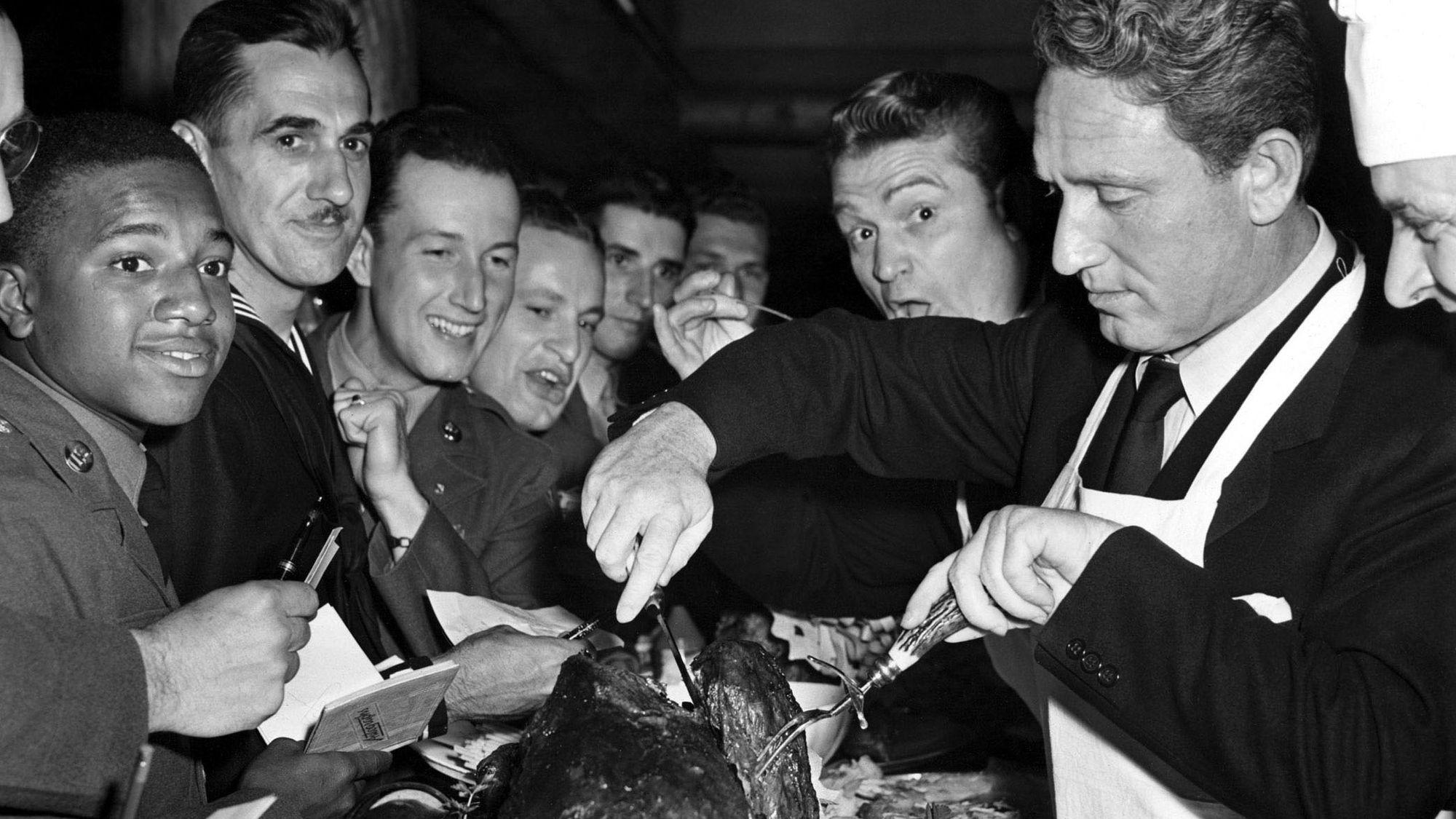
The Canteen had space for 2,000 (and they usually turned it over every hour) and was filled to capacity every single day it was open: Mondays-Saturdays at night, Sundays in the afternoon. (The one millionth guest, one Carl Bell, got to kiss Betty Grable. "Wholesome" meant something slightly different back then.) The "ticket" for entry was your uniform; at Garfield's request, officers were not allowed. Different sources have different things to say about whether or not enlisted women and people of color were allowed.
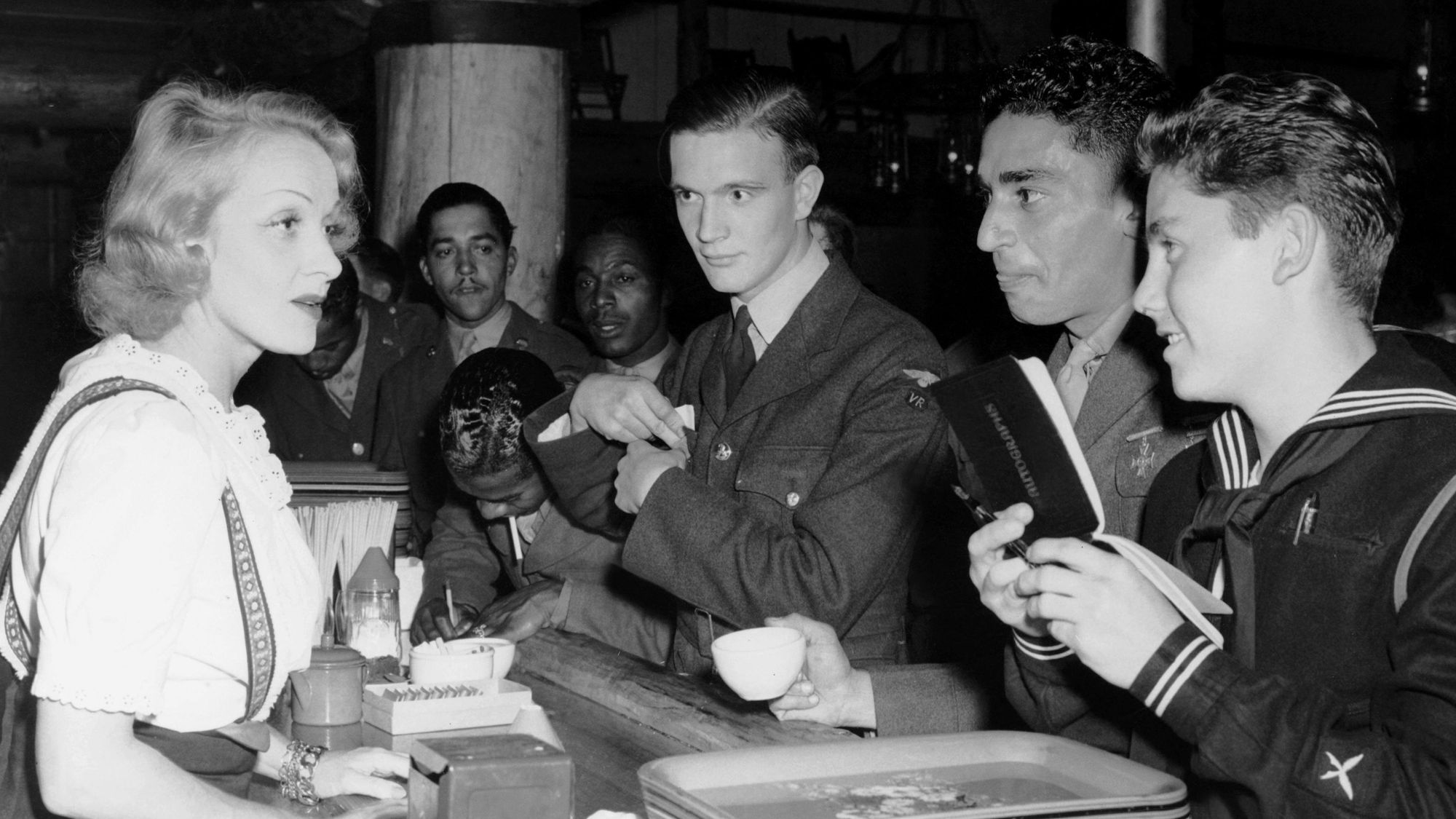
Women were allowed in Hollywood Canteen, though some later reported to the National WWII Museum that they had to stay up in the balcony. (I haven't found any pictures of a balcony.) There are photos of women on the dance floor, but they're not necessarily in uniform, so maybe they were actor volunteers. Some biographers claim that Davis insisted on desegregation in the club; this source says servicemen of color were officially not allowed. Based on photos, it does look like an integrated space, but perhaps much like the USO, many service members opted out, not needing the hassle from their more provincial brothers in arms. (The only fully, and intentionally, integrated USO location was the Rainbow Club in Honolulu.)
Warner Bros (where Davis was contracted) made the film "Hollywood Canteen," which was set in the the actual canteen, in 1943, as well as "Thank Your Lucky Stars," where all the big Hollywood Canteen regulars had cameos and the stars donated their salaries to the cause. Joan Crawford apparently called the former "a very pleasant pile of shit for wartime audiences," which I hope is true, though I can't find a primary source.
The Hollywood Canteen closed at the end of the war, donating its leftover funds to veterans' charities.
Now, there is a coda to this: a restaurant called Hollywood Canteen opened at 1006 Seward in Hollywood in 1991. Though it aimed for a retro look, it wasn't trying to trick anyone into thinking it was the Hollywood Canteen: neither of the LA Times articles about it mention anything along those lines. By 2012 it had devolved into a pretty pathetic event space; it closed and Rao's Los Angeles outpost opened in there in 2013. Someone, I'm guessing the building's owner, allowed the folks at Rao's to think this location was the wartime celebrity hotspot. Both the New York Times and The Hollywood Reporter described as such, too.
But no, that is not the spruced-up stable where 3,000 volunteers, all in the film industry, worked to bring a little fun into the lives of 3 million servicemembers. There's no memorial at its actual location on Sunset and Cahuenga, just a parking garage and the CNN building. Its contributions to cuisine were nil, but it created a lot of good memories.
